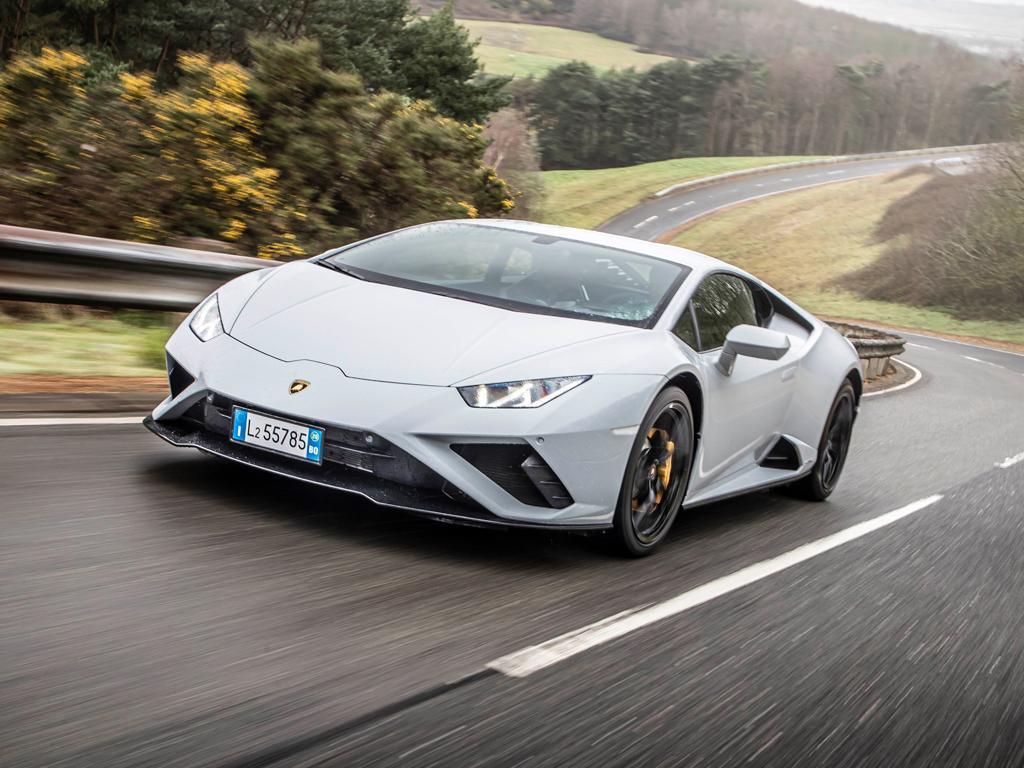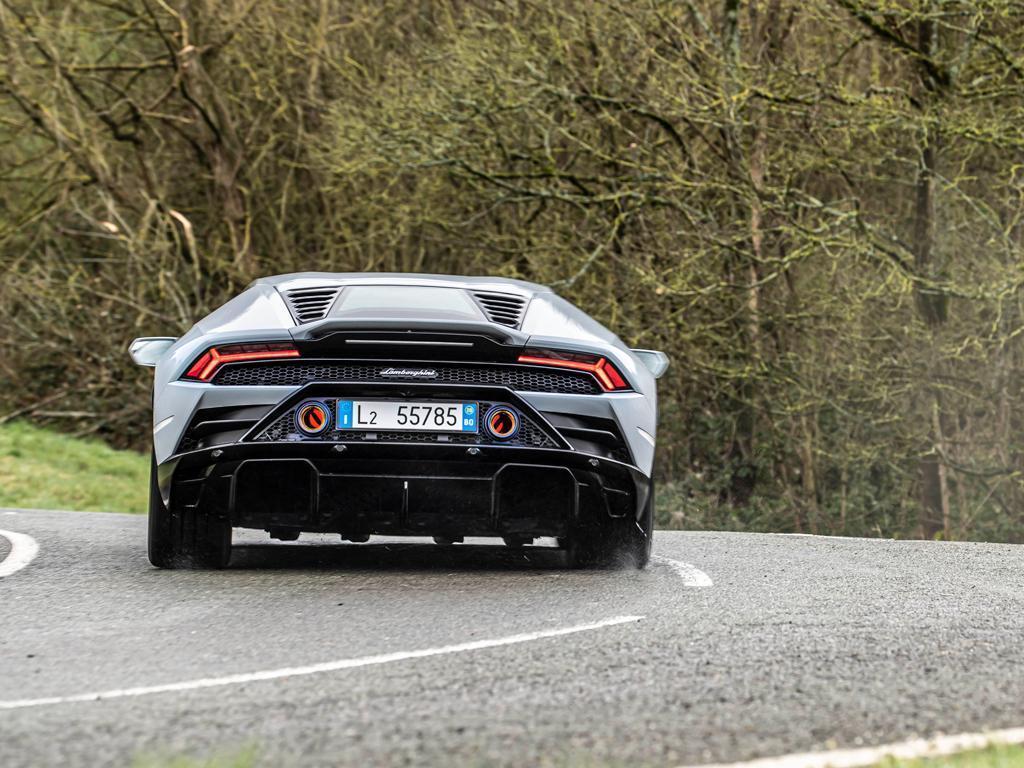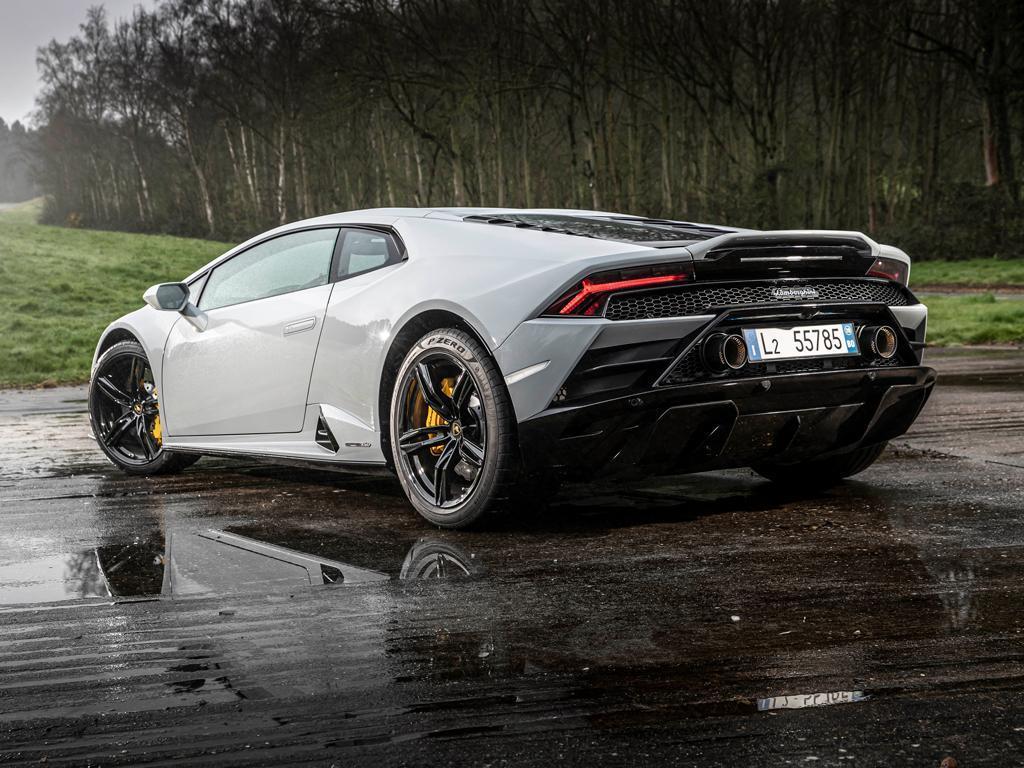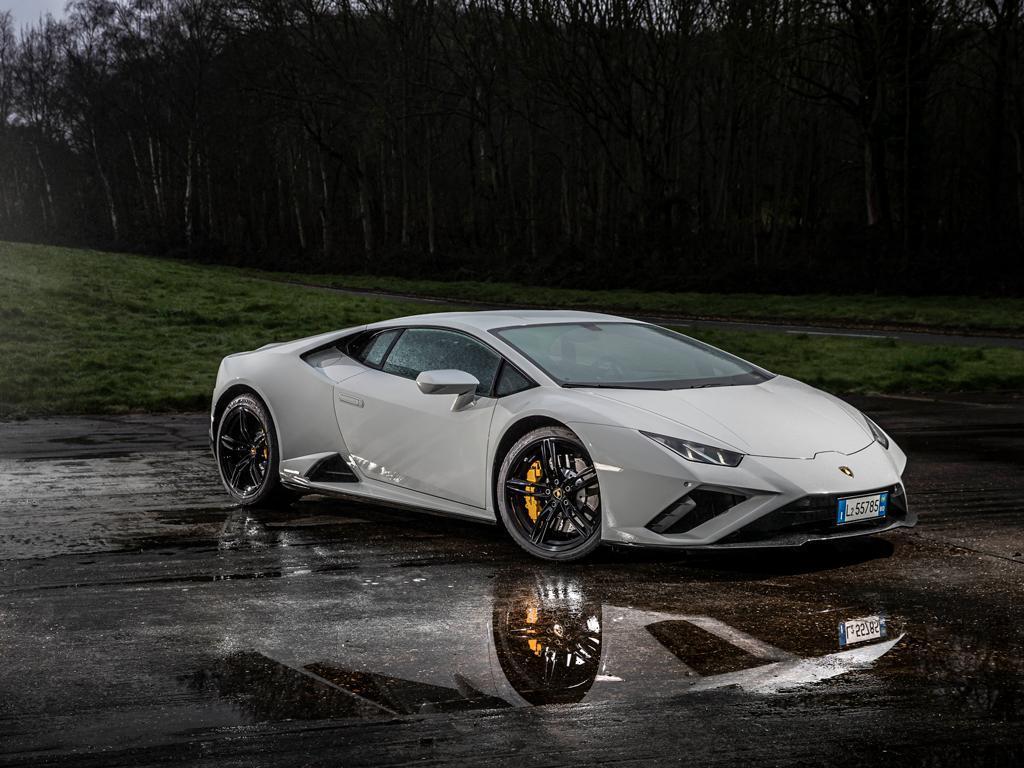2020 Lamborghini Huracan Evo RWD | UK Review
Leaner, lighter, cheaper - but not quicker. We grade the new entry-level Huracan

Is there a more evocative performance option at this price point than a 610hp, rear-wheel drive V10 Lambo? Possibly not. The Huracan Evo RWD is a proper red-blooded supercar which, in shedding some front-drive hardware and 30hp, comes out 40-grand cheaper than its all-wheel drive sibling. The technically related Audi R8 RWD is cheaper still - but this is a fully-fledged Lamborghini for £164k. One that, as far as a casual onlookers are concerned, is every bit the Ferrari-, Aston- and McLaren-rivalling status symbol that its all-wheel drive sibling is.
Then there's the RWD's greater fidelity and reduced weight. It retains the Evo's significant technical improvements - including all-wheel steering, a sharpened seven-speed twin-clutch 'box and cleverer electronic stability software - but it sheds 33kg from the nose and gets a 40:60 weight distribution as a result. Conversely, with 'only' 610hp and two wheels doing the heavy work, the Huracan RWD takes 3.3 seconds to hit 62mph and tops out at 201mph; four tenths and 1mph respectively slower than its sibling. Not that you'll notice the difference on a dry road, though - it remains a car of serious intent, for what these days is entry-level supercar money.

The visual tweaks which signify its rear-drive status are mild to say the least. Badges aside, it's limited to a simpler front intake design and a slightly tweaked rear diffuser, both of which have no impact on the car's conspicuous road presence; it looks as fantastic as ever. And inside, the decluttered Evo-spec interior maintains its now familiar blend of Italian flair and Germanic functionality. You get an intuitive Apple CarPlay-compatible 8.4-inch infotainment touchscreen within easy reach on the centre console, while the fighter jet starter-button and carbon fibre shift paddles help make the car an emotive step up from an R8 or McLaren 570S.
Our left-hand drive, Italian-spec test car had the optional sports seats, which are brilliantly supportive, if a little on the firm side, and place you low in the Huracan's carbon and aluminium spaceframe structure. Even six years into the Huracan's production life, it is no less of a spectacle, particularly when that starter button flap is raised and the V10 fires into life. And we really do mean fired; to the annoyance of neighbours everywhere, this is still an unapologetically loud supercar. The V10 gargles and growls absolutely all the time, with little more than bulkhead and glass screen between you and its aluminium block. Not that we're complaining.

The Lambo's twin-exit exhausts have a permanent bass, its intakes produce a gravelly low-end tone and, when under load in the Sport or Corsa modes, the 10-pot wail is absolutely glorious all the way up to the 8,500rpm redline. The volume is barely believable for a road car, so you can forgive it for not being able to completely shrink into the background at 70mph and top gear. The chance to play conductor to the orchestra is recompense enough, the engine so free spinning and razor sharp that every alteration in throttle angle introduces additional instrumentation into the mix. And no shortage of serious thrust.
The all-round double wishbone Evo gets rear-wheel steering to unleash better agility in the Huracan, something which seems doubly effective in the RWD. Engineers created bespoke tuning for it to enhance feel, and while the steering rack doesn't come anywhere near close to a hydraulically assisted McLaren for communication, the reduced workload and lower weight at the nose makes the RWD brilliantly pointy. With some load in the chassis, you sense the fronts encroaching on their mechanical limits more than Audi's equivalent system in the R8. And more than that, the rear-steer eliminates understeer - even if you counterproductively apply more lock when at the limit. Add an open throttle and you can instantly rotate the car beyond this natural neutrality to tighten the line.

It means that on a dry, mild day, you're absolutely never left wanting for an extra pair of driven wheels. The traction at the rear is too good, although not without the potential for over-rotation, if you pin it from low speed on a bumpy road. In those moments, the rear drive car is unquestionably the more exciting Huracan; being pushed rather than pulled along a technical stretch of B-road makes the chassis feel alive and on its toes, consistently shifting and wiggling beneath you and very much alert to every accelerator and steering input.
It's not wild or elusive either thanks to that rear limited-slip diff, which hands you ultimate, on-throttle control. As such, there are no real drawbacks to leaving the car in its Sport stability control setting (at least on the road), so well has it been tuned to trust its RWD hardware. And to allow for some pretty wide slip angles before the ESC intervenes.

This being the UK, it helps that the Huracan, kitted out with the optional adaptive dampers in this case, feels totally content at moderate speeds. It is unquestionably firm - more so than in an R8 or 570S - but not unacceptably so, although with no customisable Ego mode on the RWD, powertrain and chassis settings are always tied, so you can't have the softer chassis with the raciest engine. At the other end of the spectrum, Sport and Corsa practically nullify lateral body roll at pace. The carbon ceramic brakes are also quite happy - and squeal-free - at normal speed, although the pedal feel doesn't ramp up anywhere near as significantly as you'd want for a system that can so effectively stop a car dead on its nose. At speed, you operate the brake like a button - one you'll call into regular use thanks to the enormous rate at which the Huracan builds speed.
The rear-drive Huracan Evo isn't the fastest, punchiest or most rounded car in the segment, then. Nor can its chassis quite match the McLaren 570S for ultimate, man-machine connection. But with such an evocative, exciting powertrain, enhanced front end agility and the moreishness of rear-wheel drive, it pushes down firmly on your adrenal gland. Being almost a 718 Cayman cheaper than its sibling, it rather appeals to the brain, too - and is free from comparison with the likes of the McLaren 720S and Ferrari F8 Tributo. For £164,000, it is as exotic as it needs to be.
SPECIFICATION - LAMBORGHINI HURACAN EVO RWD
Engine: 5,204cc, V10, normally-aspirated, petrol
Transmission: 7-speed twin-clutch
Power: 610hp @ 8,000rpm
Torque: 413lb ft @ 6,500rpm
0-62mph: 3.3 seconds
Top speed: 201mph
Kerb weight: 1,389kg (dry)
MPG: TBC
CO2: TBC
Price: £164,600











Gassing Station | General Gassing | Top of Page | What's New | My Stuff



